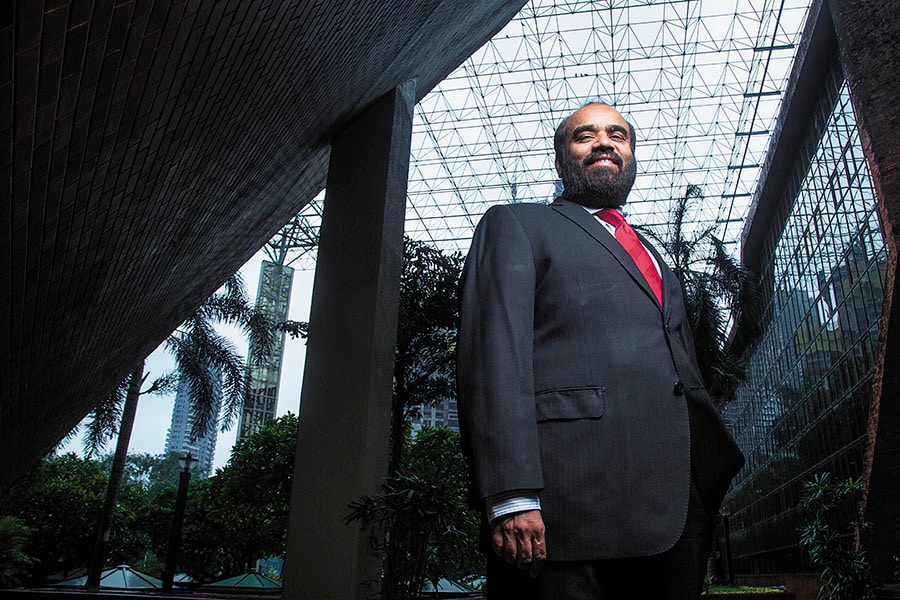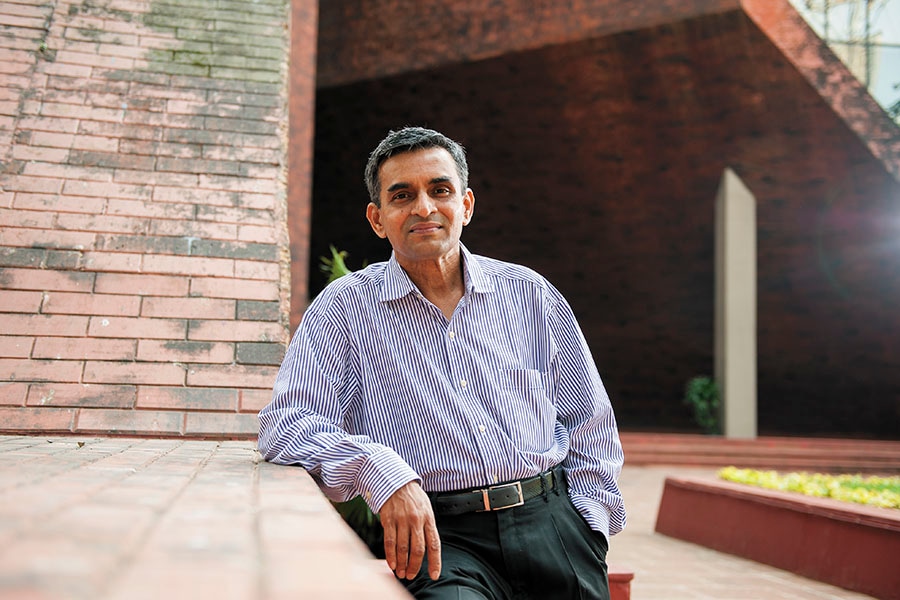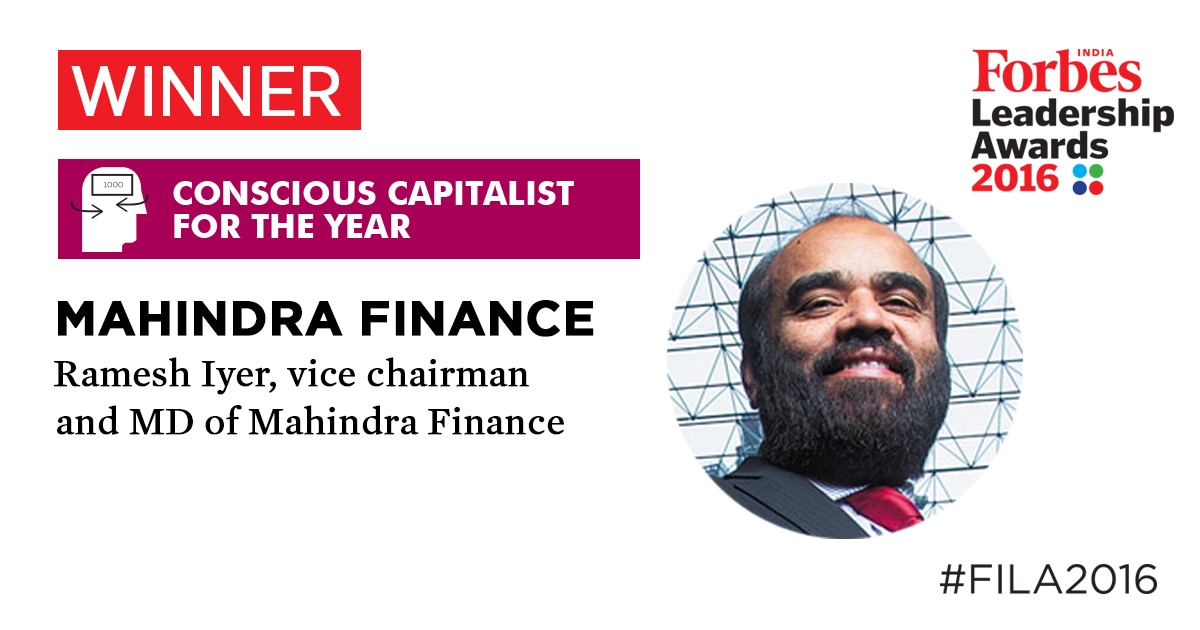
Mahindra Finance: Creating value for the bottom of the pyramid
Mahindra Finance, set up to provide vehicle loans to rural customers, has enhanced the lives of over four million people. It has now diversified into insurance and housing finance

Image: Joshua Navalkar
The formal financial sector’s failure to reach vast swathes of the country’s agrarian hinterland is an impediment to the growth of all parties involved, including the farmers and the enterprises that sell them goods.
This need-supply gap in lending to rural customers was the topic of discussion at a dealers’ meeting of automotive giant Mahindra & Mahindra (M&M) in 1991. A lot of questions were posed to Bharat Doshi, then executive vice president at the company, which was a market leader in tractors and utility vehicles.
One dealer, in particular, claimed that it was in M&M’s interest to start a financial services business that would help farmers finance their vehicle purchases. Doshi communicated the idea to the company’s senior management, including Anand Mahindra. They fell for it and the seeds of Mahindra & Mahindra Financial Services Ltd, popularly called Mahindra Finance, were sown. The management decided to set up a finance company where the dealers themselves would hold the equity.
In 1992, V Ravi, general manager, accounts, at M&M, and Ramesh Iyer, general manager, operations, who had just joined from Ashok Leyland Finance (now called Hinduja Leyland Finance), were assigned the responsibility of setting up the company. Initially, the two worked out of a small office in the basement of Mahindra Towers, M&M’s headquarters at Worli in Mumbai, with a big Godrej cupboard doubling up as a separator. “We were a garage startup much before the word startup was coined,” says Ravi, 57.
Over the next few months, Iyer and Ravi began looking for potential customers in rural India who would want to buy utility vehicles to transport people and goods.
The company started by financing the dealers of M&M’s utility vehicles in 1993 and took leads on customers from them. Iyer set up a small team and criss-crossed the length and breadth of India. From Machilipatnam in Andhra Pradesh to Begusarai in Bihar, they offered loans to customers and guaranteed vehicle delivery in record time. “Meeting customers at their homes was important because it gave us insights into their socio-economic backgrounds and how we can service them in the future. These customers did not have regular incomes and a part of our job was to help them earn,” recalls the 58-year-old Iyer. The company slowly started to build a loan book and, over a period of time, a pan-India network.
Two decades later, Mahindra Finance is one of the biggest non-banking financial companies (NBFC) in India with a market capitalisation of over Rs 20,000 crore. For the financial year ended March 31, 2016, it had a total income of Rs 5,905 crore and a net profit of Rs 672 crore. The company’s return on equity stands at 11 percent.

“Mahindra Finance’s deep connection with its customers and their evolving needs has been the key to its growth and success over the years. The company has pioneered innovative financial solutions that are transforming lives in urban, and especially rural, communities across India,” says Anand Mahindra.
Traditionally, NBFCs borrow from banks and lend at slightly higher rates. Mahindra Finance grew at a fast pace between 2004 and 2007, as the Reserve Bank of India brought down interest rates. That was the time the banking industry also started to witness huge competition from mutual fund houses, which were flush with funds. They were lending money at lower rates to corporates with high credit ratings. But after the 2008 financial crisis, the mutual funds were under redemption pressure and did not have money to give back to their investors.
At the time, a major mutual fund that had given money to Mahindra Finance requested it to return the amount before it was due. Mahindra Finance had no obligation to do so, but it paid Rs 800 crore to the fund in good faith. “We were there for a long-term commitment. Today the fund respects us for helping it in times of trouble,” says Ravi.
Iyer, vice chairman and managing director of Mahindra Finance, and Ravi, now the executive director and chief financial officer, have created a firm that has sanctioned loans to over four million people. In the process, they have built a profitable company with assets of Rs 40,933 crore that has been growing at 22 percent per annum over the last five years. In 2002, the company started financing vehicles of other auto companies as well and today, finances 9 percent of the total turnover of Maruti Suzuki.
Mahindra Finance’s two subsidiaries—the insurance firm Mahindra Insurance Brokers (MIB) established in 2004 and Mahindra Rural Housing Finance (MRHF) set up in 2007—are also growing at a fast rate riding on its goodwill.
The company’s business, however, is cyclical and depends on the vagaries of the weather, particularly the monsoon. According to a report from broking firm IIFL, minimum support prices (MSP) of agri-commodities have a direct correlation with Mahindra Finance’s gross non-performing assets (GNPA), implying the dependence of its customers on the rural economy.
But it is not profits alone that drive Iyer. Over the years, he has been able to transform the lives of many rural families by giving them access to loans, insurance and, more importantly, a basic livelihood. “We identified the pain points of our customers—lack of access to credit. We helped them open their first banking accounts. Over time, we also evolved a model of generating employment in the rural sector. In fact, we grow them from being labourers to owners of their business,” says Iyer.
In 2001, Mahindra Finance started financing the purchase of tractors. This has its own set of challenges as people pay quarterly or half-yearly instalments depending on the harvest and almost 40 percent of the tractors are used for non-farming activities like haulage.
But the biggest challenge for the company is to figure out the credit-worthiness of loan applicants. For this, Iyer has figured out a checklist. To finance loan applicants, it is important to understand the cash flows of their business. The down payment is an important credit estimator. That gives an idea about how the borrower’s repayment pattern would be over the next six months.
The ability to spot quality borrowers also comes from understanding customers. To do so, Mahindra Finance hires from local colleges as these youngsters would be well-connected with the villages and know the people personally; they also attend gram panchayat meetings and talk about loans in the local language, creating an immediate connect.
Iyer, too, spent the initial years of building the business in understanding people. He used to visit his customers early in the mornings or late evenings when the farmers are typically not busy. If instalments were not paid on time, he would understand the reasons for it from the customer.

Image: Mexy Xavier
Over the years, his visits to the farms have decreased, but his field staff follow the practice. They are keen on creating value for the customer and are always looking for new ideas to improve their quality of life. Most of the borrowers, for instance, pay their instalments in cash. Mahindra Finance collects around Rs 1,900 crore every month from its customers, 70 percent of which is in cash. “Some customers walk into the branch with coins, but that is the nature of their business. We do not mind counting the coins,” says Ravi.
A personal understanding of customers also helped Iyer spot another opportunity in 2004, when the government opened up insurance to the private sector in India. He had noticed that most of his customers were not insured.
Iyer got in Jaideep Devare, an old M&M hand, to head MIB, which distributes life insurance products to the customers of Mahindra Finance. Later on, Kotak Old Mutual Life Insurance was roped in to co-create a product called Loan Suraksha to insure the life of the borrower for the value of the vehicle. The loan is waived off by the finance company in case a borrower dies and the insurance company settles the loan with the finance company. “The family is protected and retains the vehicle. Over the last 12 years, we must have settled some 10,250 claims. And this is a great value addition that we have done to these villages,” says Devare, managing director, MIB. He gives credit to Iyer’s vision to spot opportunities and create value for the Mahindra Finance customer.
“Ramesh Iyer is persistent and dedicated. He will not be stopped by impediments. He is always high on execution and knows how to get a team together. The core team is together for ages. There is long-term commitment and that is what Iyer is all about,” says Gaurang Shah, director, Kotak Life Insurance. Mahindra Finance accounts for 4 percent of Kotak Life’s new business premiums every year, making it the largest client for the company.
In 2007, Iyer also noticed that many of his customers needed money to build their own house. But unlike in the cities, people in rural India rarely required a big loan for it. Some already had a house, but needed money to fix a roof, build a toilet or expand/construct a new wall. The ticket size for these houses was around Rs 1 lakh to Rs 3 lakh. Iyer and his team floated MRHF with the objective of providing finance to buy or repair a house in the rural sector.
Today, the company, in the process of giving loans, helps the farmers update land records and turn it into collateral. Often the plot is in the name of their ancestors and the records are not updated. MRHF sees to it that this process is completed and the farmer who is applying for the loan gets the records updated in his name.
“The biggest social impact we make is to give a person a feeling of respect and confidence. A house denotes social status. Till now customers were chasing banks and today there are people at their doorstep giving them [credit] services,” says Anuj Mehra, managing director, MRHF. The company has 4 lakh customers for a book size of Rs 3,500 crore.
When Iyer and Mehra approached National Housing Bank (NHB)—the apex institution for housing finance in India—to explain their idea of financing rural housing, NHB became an investor in the company with a 12.5 percent stake and is still holding on to it.
Over the years, MRHF has gathered a lot of data which today helps it run advanced analytics to decide credit scores. This has made it easy to figure out credit scores, based on people’s income. While it is a work-in-progress model, there is a lot of effort being put into understanding customers and ascertaining whether a particular customer has a high chance of becoming a stressed asset.
Mahindra Finance and its subsidiaries are working hard to connect the dots to make lending easy even as the market gets competitive. The company has also tied up with cab aggregator Ola in cities, to provide finance to drivers to purchase vehicles.
When Mahindra Finance took the decision to start financing rural customers in the ’90s, all the leading NBFCs in the country mocked at it because most of them thought that it was a difficult market and a villager would not be able to repay his loans, says Ravi. “But they were wrong. Our customers pay on time. We have built a strong partnership model where we understand the customer,” he points out. For Mahindra Finance, the share of customers who have not paid instalments on their loans has never exceeded 2 percent.
The company is now concentrating on refinancing small and medium enterprises (SMEs), which are expected to be the next big growth driver for the company. These SMEs will be in the areas of agriculture, auto and engineering. Mahindra Finance has capped its exposure to Rs 5 crore per SME. It has also started an asset management business, Mahindra Asset Management Company, to get their customers to invest in mutual funds.
With all the growth and diversification, it is hard to believe that this is the same garage startup that began in the basement of Mahindra Towers. But Iyer remains modest. “What really matters is the value we create for our customers,” he says.
(This story appears in the 30 November, -0001 issue of Forbes India. To visit our Archives, click here.)
X






